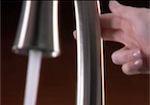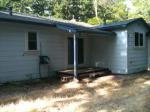Most homeowners today are concerned with energy efficiency and are beginning to take retrofitting seriously. They want the efficiency that comes from switching their lighting from outdated incandescent lights to LED or CFL bulbs and home lighting controls which add to the energy and cost savings of new light bulbs – but they may run into problems when it comes to existing dimmer devices already installed in their homes.
Most dimmers in homes today (homes built before 2011), are installed exclusively for incandescent lighting. If you try to simply replace the bulb without considering the dimmer switch you will probably run into some issues. Although, you may get lucky and the dimmer is actually compatible with your new energy efficient lighting, but most likely you may run into one or more of these issues:
- Lack of dimming range – the energy efficient bulb can’t be reduced properly to its lower range or vice versa, cannot be maximized to its brightest in an aesthetically pleasing way.
- Flickering of light when dimmed or increased to certain levels – this will depend on the inconsistency that exists between the dimming switch and the energy efficient bulb.
- Inconsistent lighting design throughout the home – when you go to the hardware store to buy a dimmer for your new energy efficient lighting (if you aren’t doing a total reinstall on dimmer hardware) then make sure the package says “dimmable” or “works with dimmers” or some such variation.
CFLs usually require special circuitry in dimmer switches, which is why they won’t always work if you install a CFL lightbulb into a light fixture controlled by an old dimmer switch. Read the packaging before you buy, it will state if it is dimmable. Be advised, it will not dim as smoothly as an incandescent.
LED bulbs are technically dimmable, but you will need to make sure the packaging says that they will work. Not every manufacturer has produced these newer bulbs to work with older dimmer switches.
There is a great range of pricing on dimmers depending on what the consumer needs. If you are retrofitting your kitchen for instance with under cabinet lighting, this can be done relatively cheaply with the dimmer option available for around $200. If a simple dimmer switch is all you need, just make sure you read the package, usually one can be procured for about $15 on the low end and $50 on the high end.
The dimmer switch pictured at the top of the page clearly states, in the title and description of the product on Amazon, that it is compatible with LED and/or CFL bulbs. So this is what you want to look for.
Newer dimmers switches should say “TRIAC” on the package if you want further energy efficiency with your dimmer switch itself. These will further cut costs of running your lamps. TRIAC dimmers allow electricity to cycle through the bulbs at less than 60 Hz and cause the bulb to use less energy. Older dimmers are “RESISTIVE” dimmers meaning electricity not being used by the lamp would be turned into heat by the dimmer, thus there would be no electrical cost savings.
Most of the time there is a simple solution for the issues of dimmers, a lot of the newer dimmer switches being produced work with energy efficient lighting, and dimmers. A Google or Amazon search will give you a long list of dimmers you can install with newer lights. And give you specifications on which type of dimmer works with which bulb.
Danielle Stewart is a lighting design expert. She has become increasingly interested in lighting retrofits and making energy efficient lighting information available to consumers. She blogs for [P-2], a leading energy efficient commercial lighting manufacturer and the online source for lighting retrofit solutions and information retrofits.








